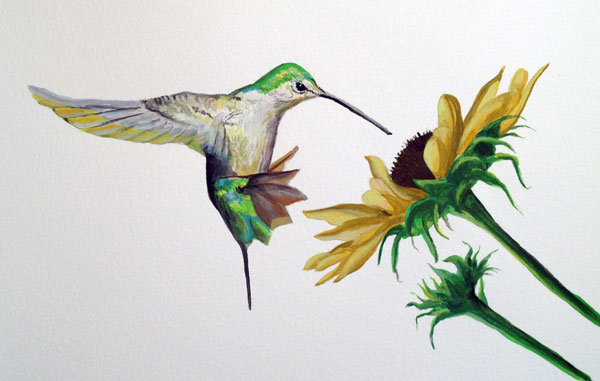 by Matt Fussell
by Matt FussellBirds have long been a favorite subject for paintings and drawings. Their fleeting movements, grace of flight, and beauty have attracted the eyes and hearts of artists and patrons alike. Perhaps, this genre is elevated because of the passions of bird lovers. (There's even a popular movie on the subject of bird watching.)
But you don't have to be an avid bird watcher to appreciate the beauty that this subject provides. The bodies of birds feature bright colors and their bodies create beautiful organic shapes. It's no wonder why artists are drawn to them.
While drawing a bird from life is an admirable endeavour, the more practical approach is to use a photo reference. It is best to find or take a photo reference image and then crop it in order create an aesthetic composition before heading to the finished surface. The photo reference used in the video on this page is featured below...

Here's a look at the finished painting...

Gouache is a form of watercolor paint. More specifically, gouache is opaque watercolor. Many watercolor techniques apply to gouache. It can be blocked out using masking fluid, applied as washes, and lifted and thinned like watercolor. However, it can also be applied with thicker applications like acrylic paint.
This allows the paint to be applied in layers with opaque applications. Gouache can best be describes as a medium "in between" watercolor and acrylic. It dries very quickly allowing the artist to develop an image quickly.
Gouache can be applied to a variety of surfaces. Most commonly, gouache is applied on watercolor paper, but because of its opaqueness, it can be applied to toned papers as well. While a variety of brushes can be used to apply the paint to the surface, I have found that nylon brushes seem to perform best.
When mixing the paint, it is advised to use a small test sheet of paper to test the color, but more importantly the consistency of the paint.